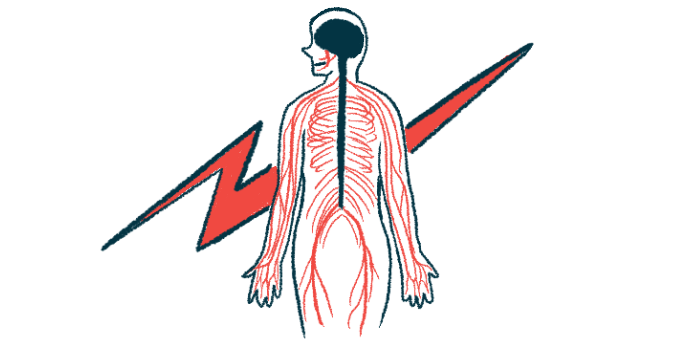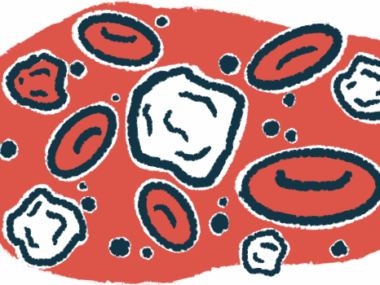Neurological symptoms of vasculitis differ by AAV type: Study
Headache, signs of peripheral nerve damage found to be most common
Written by |

The most common neurological symptoms of ANCA-associated vasculitis (AAV) among patients in a single center in Columbia — regardless of disease type — were headache and objective signs of damage to nerves outside the brain and spinal cord, a study showed.
That said, the researchers found a vast array of such symptoms among patients. Moreover, the rates of nervous system involvement also differed depending on the type of AAV. People with an undifferentiated form that didn’t fit any disease type had the highest chance of nervous system involvement, followed by those with eosinophilic granulomatosis with polyangiitis (EGPA), the study found.
“Due to the wide spectrum of neurological manifestations, a low suspicion threshold of NS [nervous system] involvement in patients with AAV among treating physicians should be considered,” the researchers wrote.
The team noted that patients with nervous system involvement were less likely to have kidney problems and appeared to have a lower risk of death over five years than those without nervous symptoms.
“As the clinical presentation of the disease may differ across ethnic groups and geographic regions, these data will help to understand the natural history of neurological manifestations in AAV, facilitating timely diagnosis,” the researchers wrote.
The study, “Nervous System Involvement in ANCA-Associated Vasculitis: Single center experience from Latin America,” was published in the journal Seminars in Arthritis and Rheumatism.
AAV is a group of autoimmune diseases in which small blood vessels become inflamed and damaged. ANCAs, a category of self-reactive antibodies, typically cause this immune overactivation. Among people with AAV, symptoms can vary depending on where in the body the damage occurs.
Cases typically classified as MPA, GPA, or EGPA
Depending on the symptom profile and other features, cases can be categorized into three major types: microscopic polyangiitis, or MPA, granulomatosis with polyangiitis, known as GPA, or EGPA. If a case doesn’t fit the clinical characteristics of any of these types, clinicians may refer to it as undifferentiated AAV.
Neurological involvement in AAV can affect both the central nervous system (CNS), comprised of the brain and spinal cord, and the peripheral nervous system, or PNS — the nerves outside the CNS. This may lead to abnormal sensations, headaches, cognitive impairment, or other symptoms.
“NS involvement in AAV is often misdiagnosed, and awareness about this manifestation should be reinforced, as a prompt start of treatment is fundamental to avoid irreversible organ damage and an increase in mortality,” the researchers wrote.
In this study, a team of researchers in Bogotá sought to learn more about nervous system involvement in AAV. To that end, the team retrospectively examined the medical records of 127 AAV patients followed at a single center. The patients had a median age of 58.
[Nervous system] involvement in AAV is often misdiagnosed, and awareness about this manifestation should be reinforced, as a prompt start of treatment is fundamental to avoid irreversible organ damage and an increase in mortality.
Regarding AAV types, 45% had GPA, 42% had MPA, 3% had EGPA, and the remainder (10%) had undifferentiated AAV.
Nervous system involvement was reported in 48 patients (38%). A slightly higher proportion of these patients showed CNS involvement (77%) relative to PNS involvement (70%). Nearly half (48%) had symptoms of both.
The most common nervous manifestation was headache (56%), followed by objective signs of peripheral neuropathy, or nerve damage (50%), and patient-reported abnormal sensations, or sensory dysfunction (44%).
Neurological involvement seen for all patients with undiffentiated AAV
When analyzing results by AAV type, the team found that all participants with undifferentiated AAV and 75% of those with EGPA had neurological involvement, while these proportions were lower among MPA patients (32%) and those with GPA (26%).
Across groups, peripheral neuropathy was significantly more common among GPA patients.
Although not statistically significant, delirium was found most commonly among those with EGPA, and headaches among those with undifferentiated AAV.
While overall demographics were similar between the groups with and without neurological involvement, some differences emerged.
Those with nervous system involvement were significantly less likely to have kidney impairment (50% vs. 86%) and a 2011-Five Factor Score higher than two, which is associated with a higher 5-year risk of death (52% vs. 71%). However, estimates of survival at one year didn’t differ between the groups.
“Further research should address whether patients without renal involvement should be screened for neurological involvement,” the researchers wrote.
The potential difference in five-year mortality risk may be due to a lower risk of kidney impairment, the team noted.
The small group size could have influenced the frequency of symptoms and the amount of CNS and PNS involvement seen. Future work may help more fully describe the clinical features of AAV with nervous system involvement in this geographical region, the researchers noted.
“We provide the first detailed description of AAV patients with neurological manifestations from a single center in Latin America,” the team wrote, adding that, “as a large region with racial and ethnic diversity, marked sociodemographic inequities, and unique admixture background, clinical differences may be present” compared with other regions.







